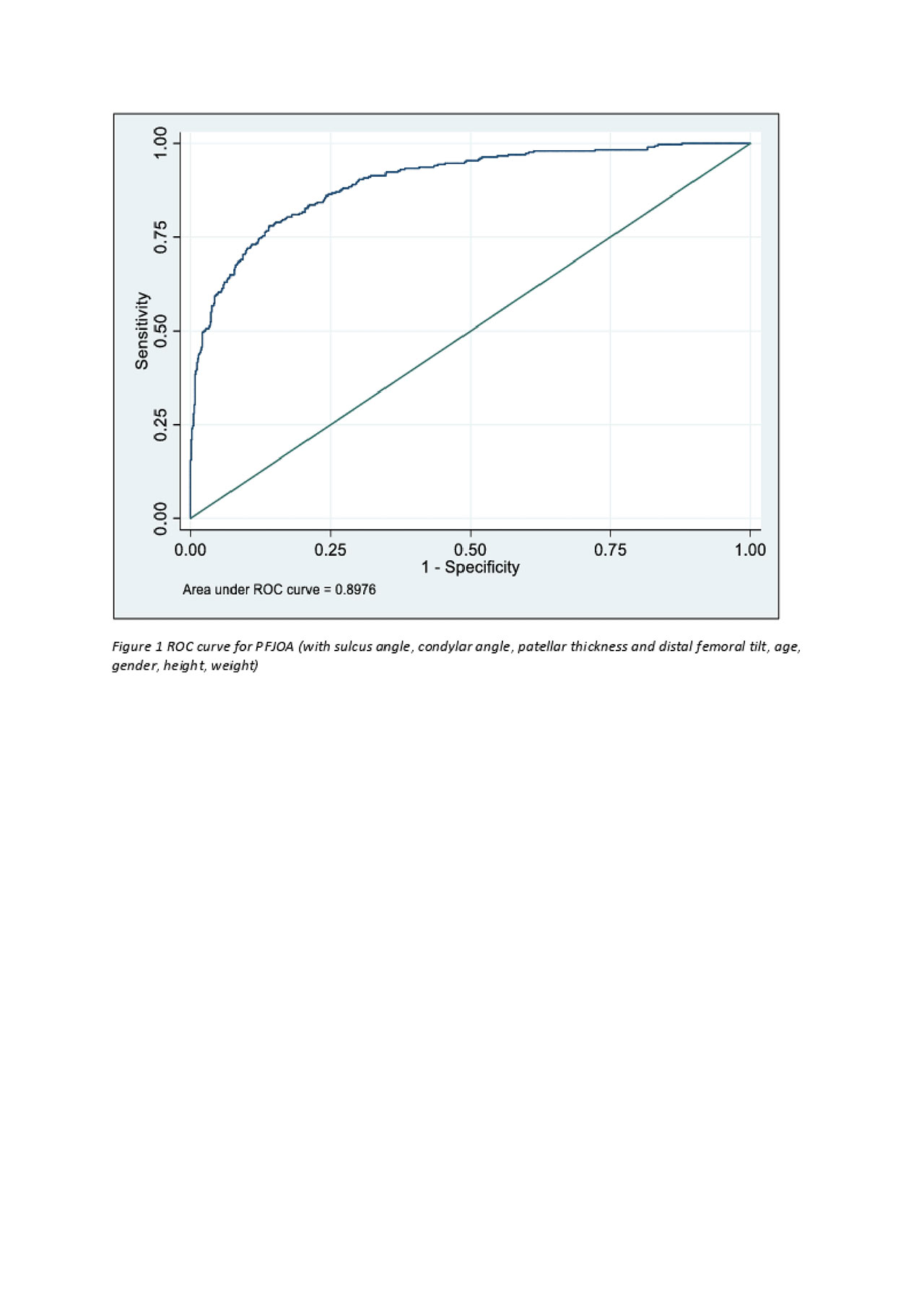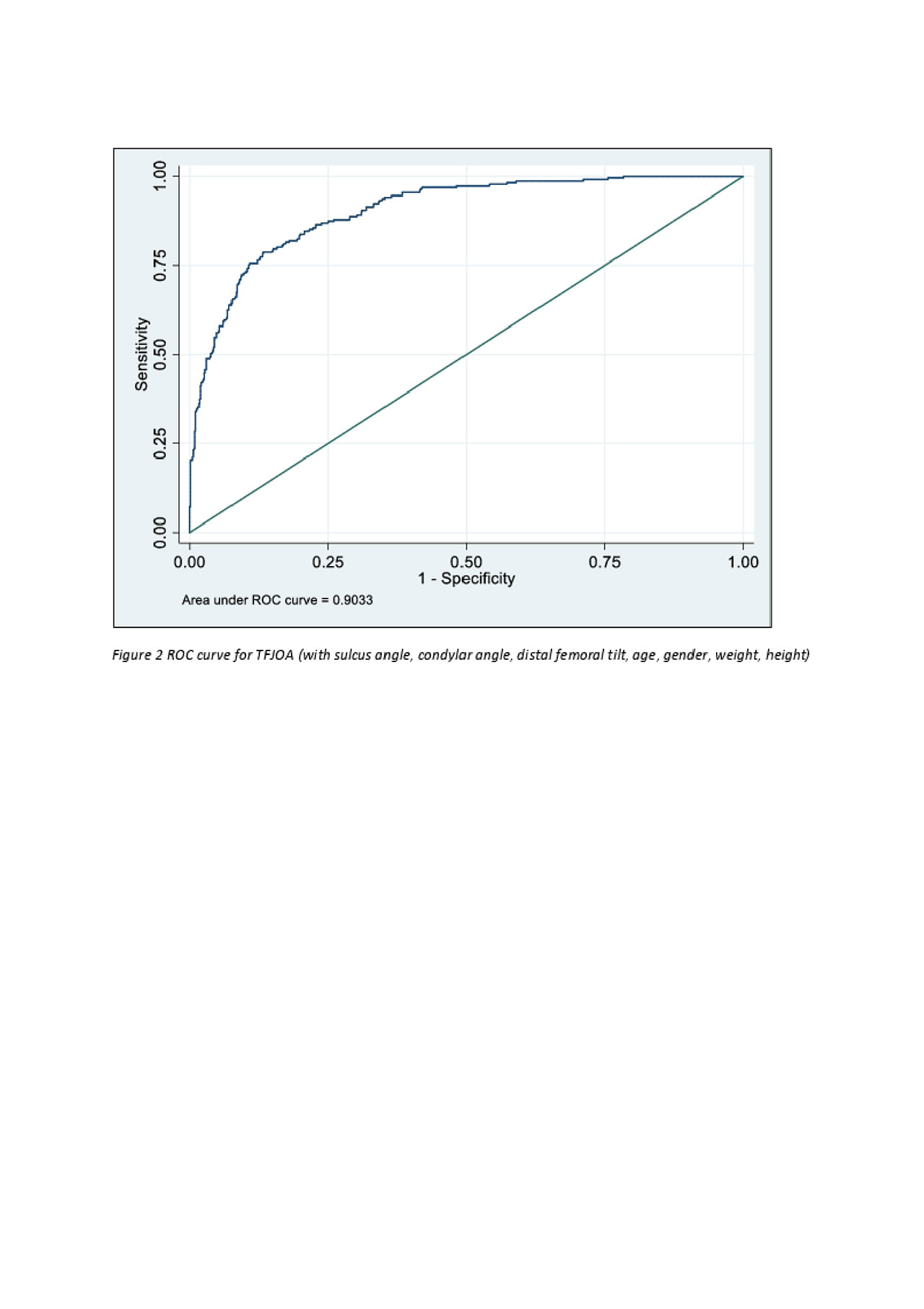Session Information
Session Type: Poster Session (Monday)
Session Time: 9:00AM-11:00AM
Background/Purpose: Although several morphological features of the hip joint predispose to hip osteoarthritis (OA), only a few are known to associate with knee OA. The aim of this study was to identify novel morphological features associated with knee OA in addition to those already known.
Methods: This was a case control study using data from the Genetics of Osteoarthritis and Lifestyle (GOAL) study. It included: (1) 315 unilateral knee OA cases, defined as no knee pain and no radiographic OA (defined as osteophyte score ≤1 and joint space narrowing score 0 according to Nottingham line drawing atlas) in one knee but pain and radiographic OA in the contralateral knee which also fulfilled ACR criteria for knee OA; (2) 816 controls, defined as participants without knee pain and radiographic OA in both knees.
The morphology of unaffected knees of people with unilateral knee OA were compared to the morphological features of the same side of normal controls under the assumption that the unaffected knees in cases would have the same morphologic feature as the affected knee before it developed OA.
Patello-femoral joint (PFJ) and tibio–femoral joint (TFJ) radiographic measurements were undertaken by a single observer (Table 1). Symmetry of measurements between right and left knees were examined in controls using minimal detectable change (MDC). Association of individual morphological measure and unilateral knee OA (defined as OA in PFJ or TFJ), PFJ OA or TFJ OA was determined using logistic regression adjusted for age, gender, height and weight. Diagnostic ability of the significant morphological features, together with age, gender, height and weight for each OA outcome was determined using receiver operating characteristic (ROC) curves.
Results: The mean (SD) for age, height and weight of cases and controls were 64(8.6) and 62(8.5) years, 166.7(14.2) and 167.5(11.1) cm, and 78.3(14.4) and 77.1(15.7) kg respectively. Mean difference between left and right sides in controls was less than the MDC for all measurements suggesting right-left symmetry. Narrow sulcus and condylar angles, increasing patellar thickness and intercondylar width associated with knee OA (Table 1). Increasing distal femoral and proximal tibial tilt associated with knee OA. ROC curves including all significant morphological features and age, gender, height and weight predicted knee, PFJ, and TFJ OA with area under the curve (AUC) of 0.91, 0.89, and 0.90 respectively (Fig.1, 2). As distal femoral and proximal tibial tilt were correlated (r=0.54), only distal femoral tilt was included in the model. Sensitivity analysis replacing distal femoral tilt with proximal tibial tilt did not change the results
Conclusion: We have identified six morphological features associated with knee OA. These features together with age, gender, height and weight predicted OA status accurately. There were some variations between morphological features associated with TFJ OA, and PFJ OA. However, sulcus angle and condylar angle associated with both PFJ and TFJ OA suggesting potential shared mechanisms for these variants in predisposing to both PFJ and TFJ OA.
To cite this abstract in AMA style:
Nair A, Zhang W, Doherty M, Abhishek A. Knee Morphology Associates with Tibio-Femoral and Patello-Femoral Osteoarthritis: A Case-Control Study [abstract]. Arthritis Rheumatol. 2019; 71 (suppl 10). https://acrabstracts.org/abstract/knee-morphology-associates-with-tibio-femoral-and-patello-femoral-osteoarthritis-a-case-control-study/. Accessed .« Back to 2019 ACR/ARP Annual Meeting
ACR Meeting Abstracts - https://acrabstracts.org/abstract/knee-morphology-associates-with-tibio-femoral-and-patello-femoral-osteoarthritis-a-case-control-study/



